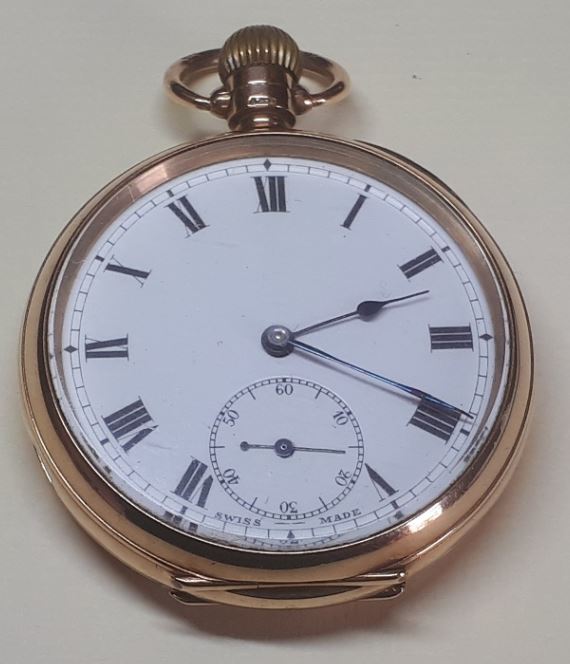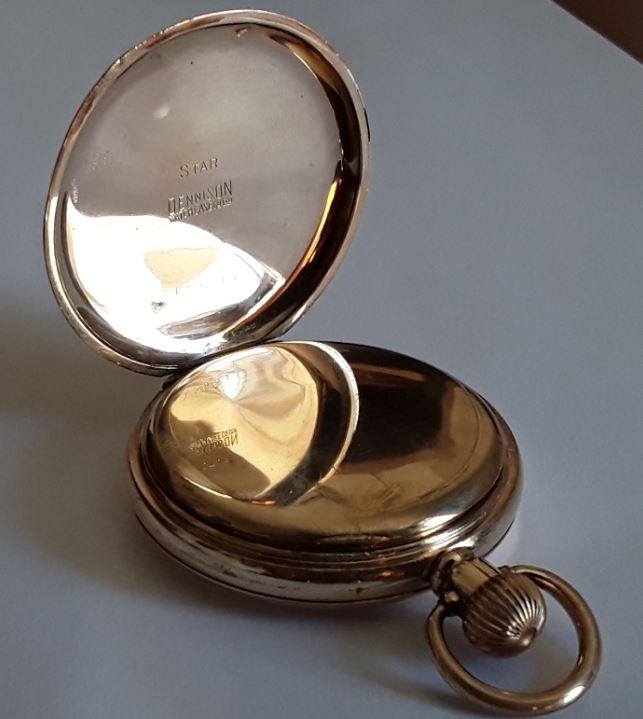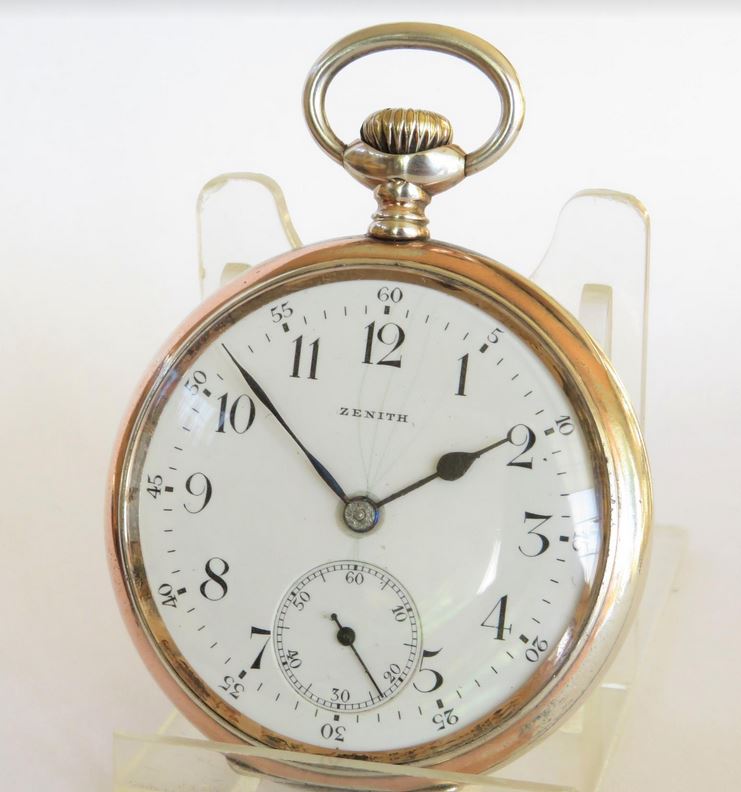Last updated on June 6, 2024
I am new to the world of antique watches and I am trying to grow my collection and my understanding of the horology world in general. I want a diverse collection of presentable and practical antique pocket and trench watches. They have to be at least one hundred years old and in reliable working condition. I want my collection to include a variety of movements, watchmakers, case types and materials. Most of the watches in my current collection are open-faced antique silver pocket watches and trench watches. I am currently on the lookout for an antique hunter-cased pocket watch in gold, preferably from a different watchmaker. I am not in a rush, I will bide my time and choose carefully. In this post, I am going to explain what I have been learning about the use of gold in antique pocket watches.
Gold
Gold, as we all know, is a beautiful, precious metal. In its purest form, gold is a bright, reddish-yellow metal that is very dense, soft and malleable. In its pure state, it has no viable use in jewellery or watches as it is simply too soft to be of practical use. It would dent, scratch and mark with everyday usage. The gold used in antique watches and jewellery is almost always a gold alloy. The gold will be mixed with another base metal to increase its hardness and other properties. Typically, the base metal used will be copper, silver or palladium. The carat system is used to indicate the amount of pure gold found in solid gold jewellery. Carat values range from 24ct for pure gold down to 9ct gold. Other common carat values include 22ct, 18ct and 14ct.
9ct gold contains 9 parts of pure gold and 15 parts of additional base metals such as silver, tin or nickel. Calculated as a percentage, the purity of a 9ct gold alloy is 37.5%. 18ct gold contains 18 parts of pure gold and 6 parts of base metal, giving it a purity of 75%. The lower the number, the more durable the alloy.
The way this gold is then used to produce an antique pocket watch will fall into one of the following categories, solid gold, filled gold, rolled gold and gold plated. Let’s have a quick look at what each of these terms actually means.
Solid gold
Solid gold, as the name suggests is a piece made completely from pure gold or a gold alloy. The gold used will be at different levels of purity. 24ct gold is too soft for a watch case and would not be able to stand the daily wear and tear of use. The case would be constructed from solid 18ct, 14ct, or 9ct gold. As a rule of thumb, the higher the carat, the less durable and more expensive it becomes.
Historically, 10ct and 15ct gold were also available options. 15ct gold was dropped as a standard in Britain around 1932. These types of gold alloys follow the principles above.
Filled and rolled gold
A filled gold timepiece would have a base metal core, such as brass, with a mechanically bonded outer layer of solid gold. To be legally considered ‘filled gold’, the gold content of the entire piece must be at least 5 per cent of the total weight. Therefore, a watch case with a nickel core (90%) and a bonded layer of 14ct gold (10%) would be considered 14ct filled gold. Silver-gilt, also known as vermeil, is an example of filled gold, using sterling silver as the underlying base metal. Rolled gold is similar to filled gold, however, the gold content is less than 5% of the total weight.
Gold plate
Gold plate is where a thin layer of gold has been deposited over the surface of another metal. It is typically applied by chemical or electrochemical plating. The actual layer of gold is only several microns thick. Heavy gold plating typically has a layer 2.5 microns thick, which is 0.0025 millimetres. To give a comparison, a standard sheet of office paper will have a thickness of around 170 microns. Filled gold will have a gold layer at least one hundred times thicker than gold plate. Galonne is a French term for a specific type of gold plating, where a gold wash is applied to an underlying piece of silver. In the early 1900s, Galonne watch cases were very popular in Europe.
Expense and durability
If we look at this in terms of expense and durability. Solid gold alloys are the most expensive and durable of these metals. Filled gold, including silver gilt, is next. It is cheaper because of the base metal core, but the gold layer will eventually wear away. However, that would probably take decades of daily use to occur. Rolled gold is cheaper and less durable as the gold content is lower. Finally, gold plating is inexpensive, but the layer of gold is so thin, it can wear away and expose the base metal very quickly. If a gold-plated watch is used daily, the plate can start showing signs of wear within a year or two. The term brassing is used when the outer gold layer has worn down to expose the brass layer beneath
You can still find antique pocket watches with gold plating that are in good condition with minor wear to the gold plate. However, if your antique watch is intended for daily use, the wearing will become more obvious. I hope this post helps with your understanding of the types of gold used in antique watches.
Related content
A list of additional posts regarding antique watches can be found on the Guides page.



